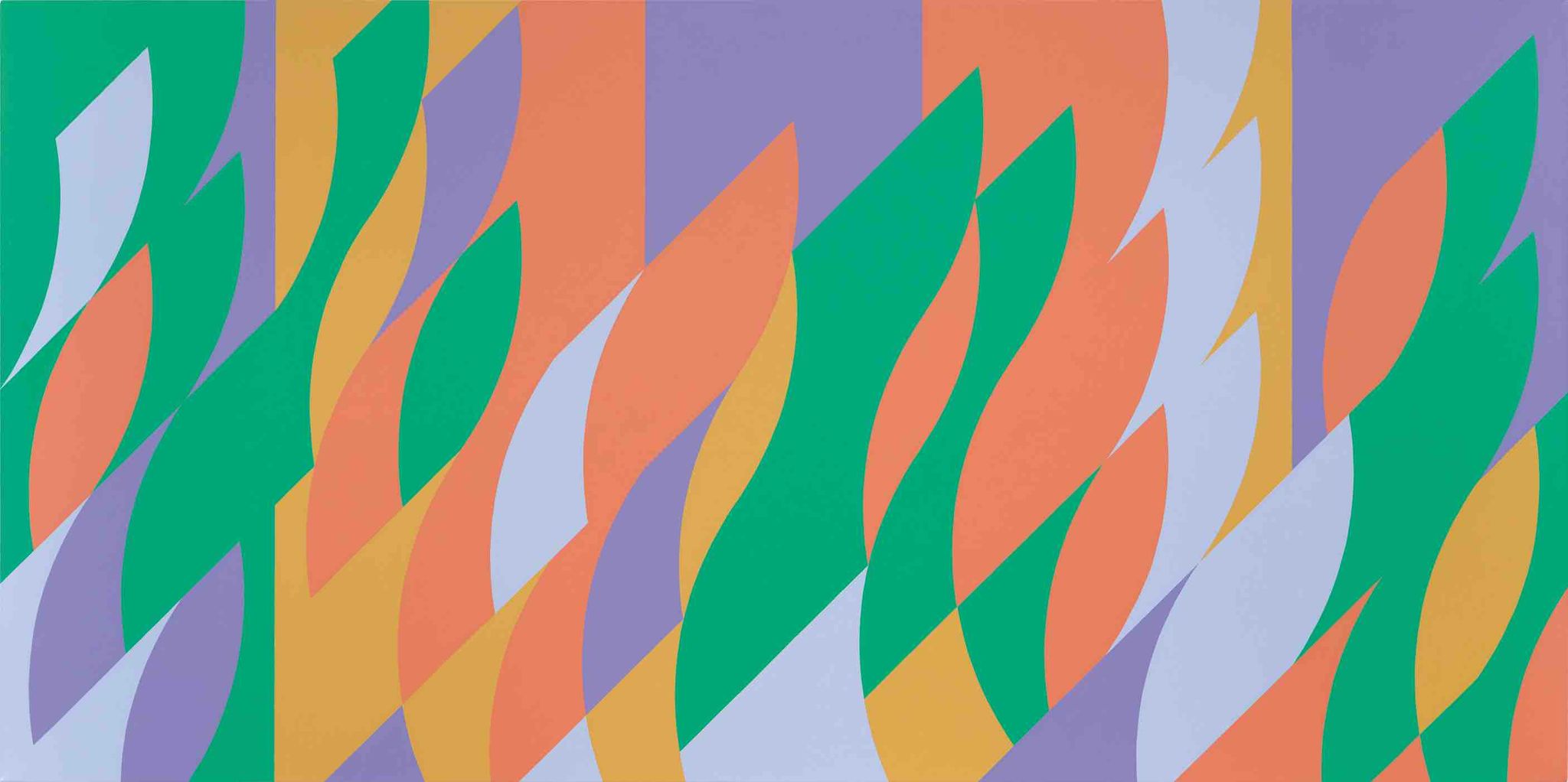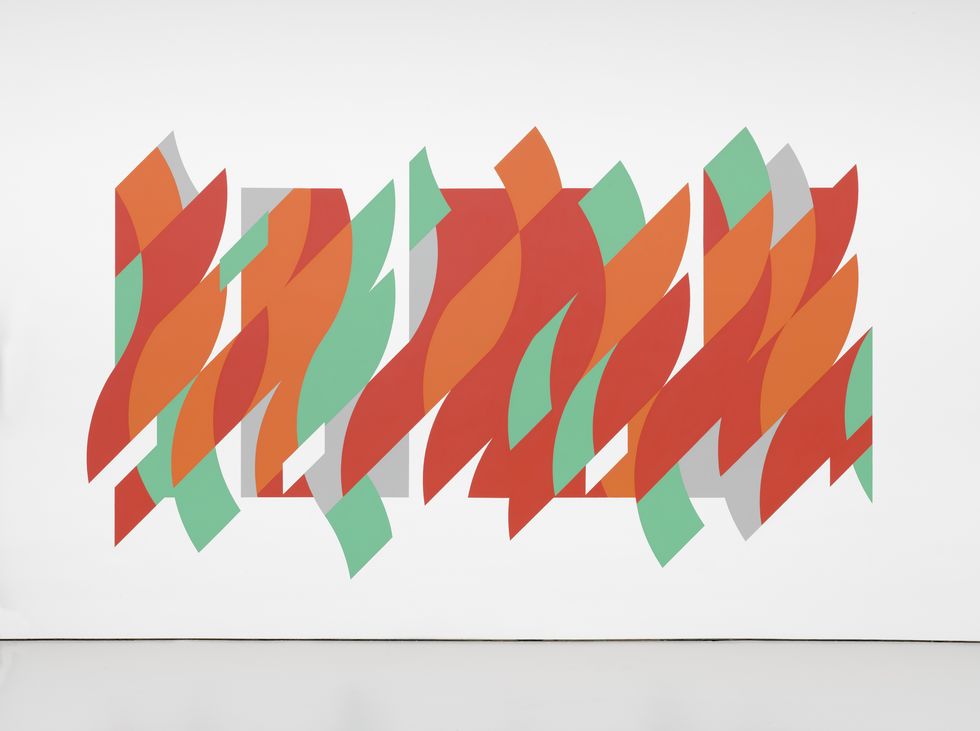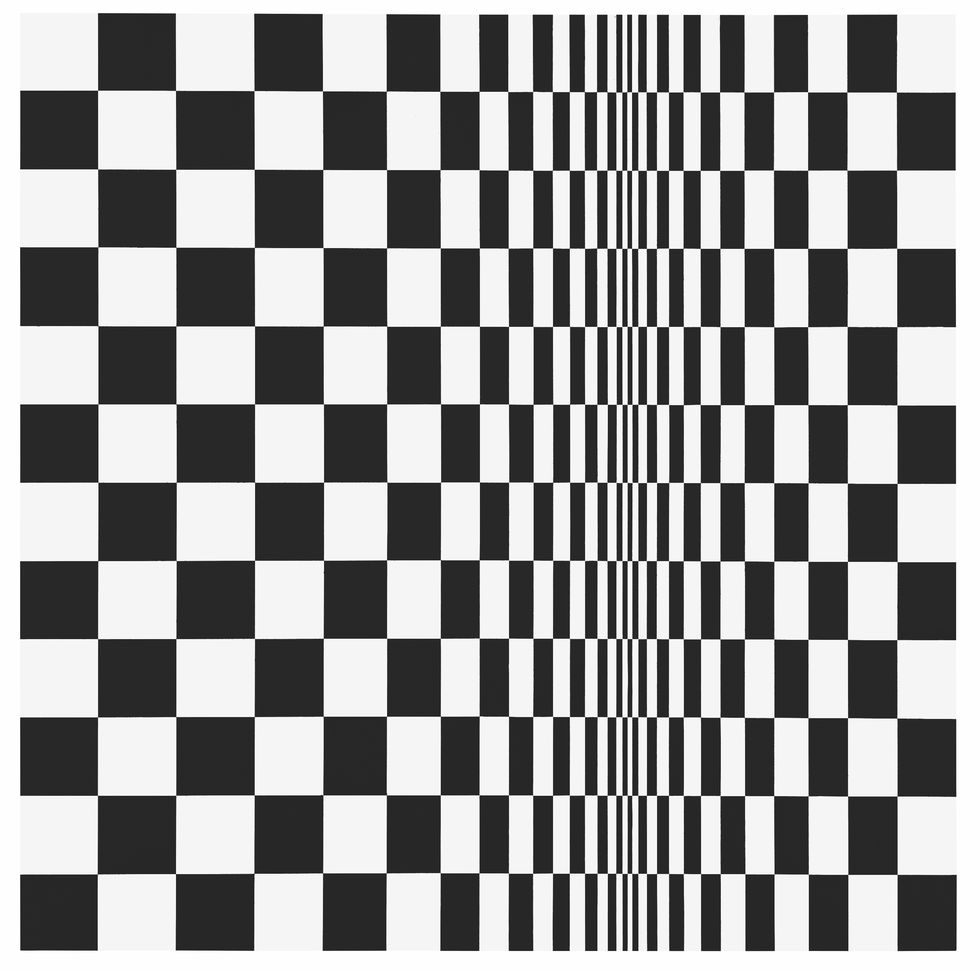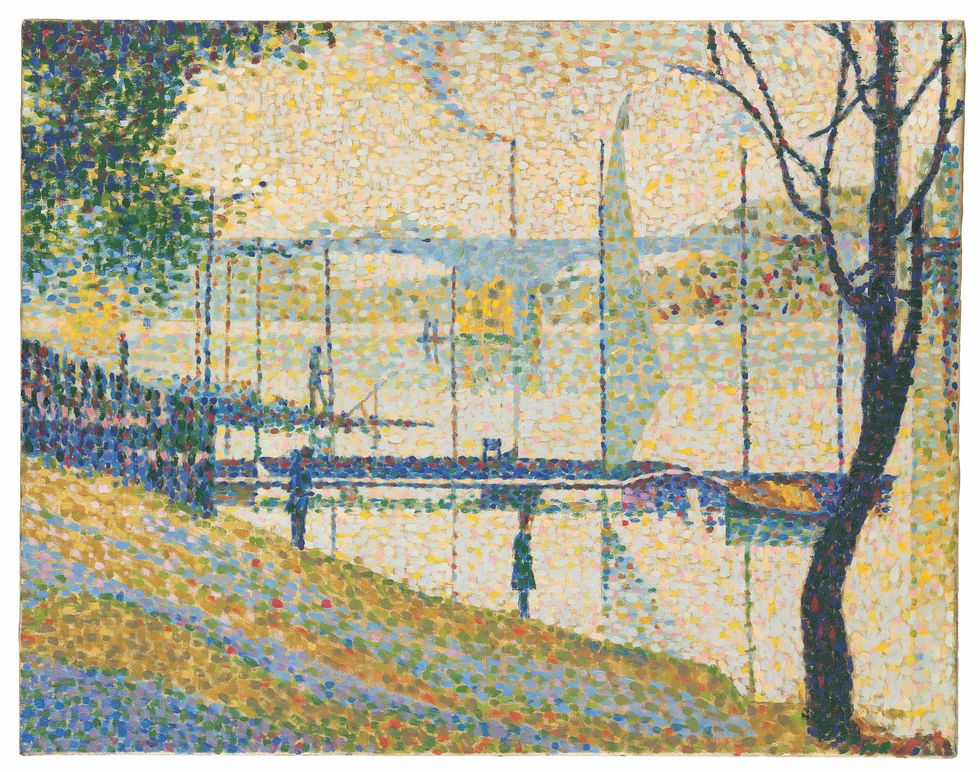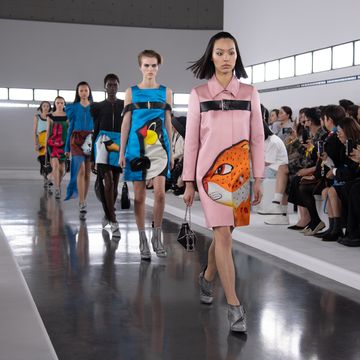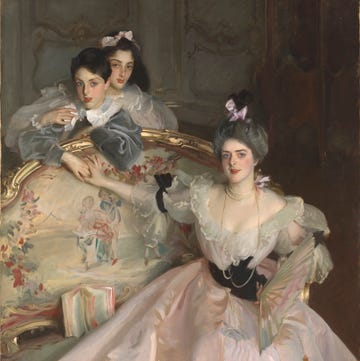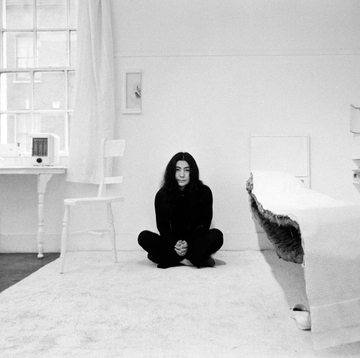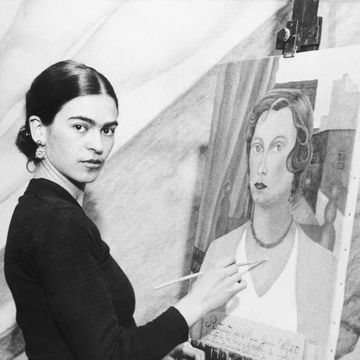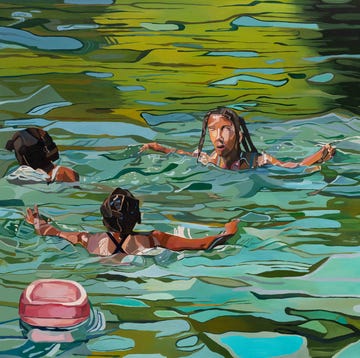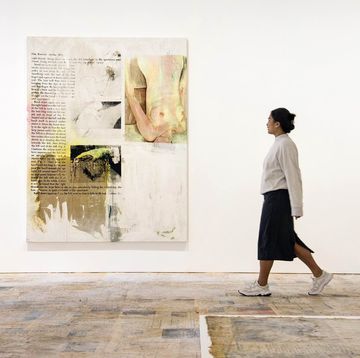When one of her relationships ended, Bridget Riley was “angry and hurt”, but not daunted. “I thought: ‘I’m not going to discuss anything with you, I can’t communicate verbally with you, so what’s the point in trying? But I’ll paint you a message so loud and clear you’ll know exactly how I feel.’ It was then that I started my black and whites.” Those ‘black and whites’ were her Op Art pieces, which burst onto the 1960s art scene. Now 88, Riley is acknowledged as one of Britain’s greatest living artists and is the subject of a major retrospective at the Hayward Gallery this October. The show brings together 70 years’ worth of her artworks, from colourful murals such as Rajasthan (2012), which is painted directly onto the gallery wall, to a full-scale reproduction of her only three-dimensional piece, the curving, shell-like Continuum (1963).
A Royal College of Art graduate, Riley initially took on odd jobs, including various teaching posts and a stint working in a glassware shop, before becoming a part-time illustrator for the advertising agency J Walter Thompson. Walking home one day in 1961, she sought shelter from the rain in the doorway of Gallery One, and encountered the owner Victor Musgrave, a champion of modern art. The meeting proved fortuitous for both: the following spring, Musgrave hosted Riley’s first solo exhibition, which met with critical acclaim. Just six years later, Riley represented Great Britain at the 34th Venice Biennale, becoming the first female artist to be awarded the International Prize for painting.
Riley’s work is all about seeing – really seeing. Her signature geometric style, ranging between monochrome moiré vibrations and pulsating colour combinations, is designed to dazzle and disorient the viewer. “She wants you to look at her art very, very closely,” says Angela Choon, the senior partner of David Zwirner, the gallery that currently represents Riley. “You must spend time, you must slow down, you must look at the painting in itself. She likes to put benches and chairs out, so that one lingers in front of her work.”
The retrospective suggests possible connections between individual pieces and themes, sometimes decades apart. “You can see how she moves in one direction – keeping something on the back-burner – and then returns to that idea 20 years later,” says the exhibition’s curator Cliff Lauson. He emphasises Riley’s role as a cultural historian; rather than seeing her art in a vacuum, she is highly conscious of her predecessors (Seurat’s pioneering pointillism, in particular, had a formative influence on her). “She has this very sharp memory of artists working across different centuries, the paths they have travelled, the decisions they have made,” he says. Yet she combines this deep academic engagement with a witty sense of humour. “On the one hand, you can have a highly rigorous, intellectual and historical conversation with her,” he says, “and then on the other you can have a mighty good chuckle.” So much of Riley’s personality is to be found in this exhibition – each piece playful and profound in equal measure, imprinting its hypnotising patterns on the mind and memory.
‘Bridget Riley’ is at the Hayward Gallery from 23 October to 26 January 2020.
